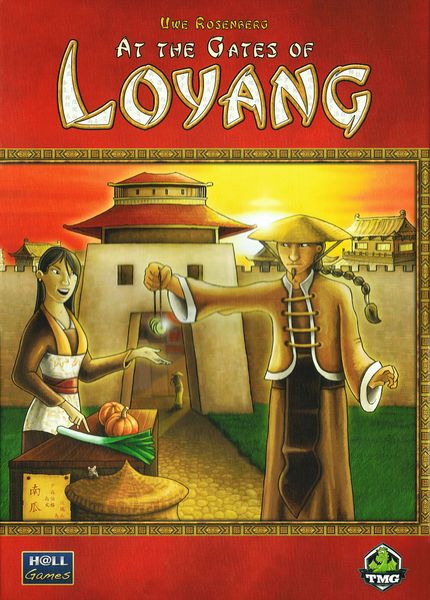At the Gates of Loyang is a board game designed by Uwe Rosenberg and released in in 2009. Known for his popular farming and economic games like Agricola and Caverna, Rosenberg brings his expertise to this title as well. In At the Gates of Loyang, players take on the role of vegetable vendors in ancient China, trying to fulfill customer orders and expand their business.
Game Components of At the Gates of Loyang
Cards: Representing fields, customers, helpers, and miscellaneous objects.Vegetable Tokens: For wheat, pumpkins, turnips, cabbage, beans, and leeks.Money Coins: For investments and scoring.Satisfaction Tokens: For customer satisfaction.Loan Cards: For financial assistance.Personal Game Boards: Each player has a board to manage their shop and scoring track.Helper Cards: Offering various positive effects to enhance gameplay.Action Cards: Used in the distribution round and actions phase.
How To Setup At the Gates of Loyang
Setting up the game involves several steps:
Create supplies with vegetable tokens, money coins, and satisfaction tokens.Shuffle and place action cards face down.Create a supply with loan cards.Each player takes a personal game board and places their scoring marker on space 1 of the scoring track.Populate the player’s shop by placing depicted vegetables from the supply.
Gameplay Mechanics and Game Objective
Mechanics
Card Drafting: Players receive two cards per round through a bidding/drawing mechanism.Contracts: Players fulfill customer orders.Loans: Players can take loans to aid their financial situation.Market: Players can exchange goods at market stalls.Set Collection: Players collect and manage various types of vegetables.Solo / Solitaire Game: Included in the base game.
Game Objective
The objective is to make the most progress on the Path of Prosperity by investing money earned from selling vegetables.The game ends after a certain number of rounds, and the player who is first on the scoring track wins.
Player Experience
Playing At the Gates of Loyang involves a delicate balance between planting, harvesting, and selling vegetables to meet customer demands. The game requires strategic planning and optimization to maximize income and progress on the scoring track. The presence of helper cards adds a layer of complexity and variability, allowing players to employ different strategies. While the game can feel repetitive, it offers a satisfying puzzle that challenges players to manage their resources efficiently.
Pros
Deep Strategic Depth: Offers a challenging economic puzzle with multiple paths to victory.Variable Gameplay: Helper cards and market mechanics introduce randomness and variety.Solo Mode: Included in the base game, providing replay value for solo players.Theme Integration: The game’s theme is well-integrated into the mechanics, creating an immersive experience.
Cons
Luck of the Draw: Market cards can create unpredictable setbacks.Oversized Box: The game box has a surprising amount of wasted space.Repetitive Aspects: Some aspects of gameplay can feel repetitive or overly simplistic.Strategy Lock-in: Playing repeatedly can make the game feel solved.
Personal Thoughts on At the Gates of Loyang
At the Gates of Loyang is ideal for fans of economic and farming-themed games who enjoy strategic planning and optimization. It is a great fit for players looking for a game that offers depth without being overly complex. While it may not be the best choice for those seeking high levels of confrontation or rapid-paced action, it is a wonderful addition to any collection for those who appreciate a well-designed, challenging, and rewarding game.
We are supported by our audience. When you purchase through links on our site, we may earn an affiliate commission, at no extra cost for you. Learn more.

